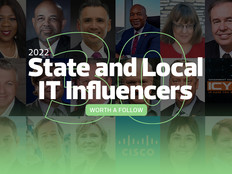Communication Conundrum
Welcome to my new StateTech column about government engagement -- the place where the rubber meets the road in the public sector. In this space, in print and online, I'll cover the internal and external interaction between government and its citizens in the process of democracy and governance.
While there will certainly be references to traditional or conventional forms of government and public engagement, the focus here will be on the use of online communication as the new form of government engagement that is or is not occurring in today's government-to-citizen, citizen-to-government and government-to-government interactions. It will focus on government issues, events, projects, policies and programs.
Since the Internet's creation, online contact between government and citizens could be described as a transactional exchange of information and communication in which governments post content to their websites for citizens to view or download. Some governments also allow citizens to purchase licenses or pay fees online.
Within government, administrations have to work especially hard to ensure cross-agency communication and cooperation. Duplication of effort or operating within silos not only decreases efficiency but also requires more resources (people and money) to achieve desired results. One might expect new technologies that improve interaction within government administrations to be a welcome development. But as many of you have experienced, this is not always the case.
Getting to Gov 2.0
New online processes make use of the emerging collaborative technologies known as Web 2.0, social media and social networks. The term is called Gov 2.0 as it relates to applications in the public sector.
The main improvement Gov 2.0 offers over earlier online communication technologies is the development of horizontal or collaborative communication structures. This elevates the earlier, two-way transaction to a level of individual or group collaboration, replicating conventional forms of group communication such as a town hall meeting or staff meeting where ideas can be exchanged and discussed. Benefits here include the ability to share and build knowledge from diverse points of view and provide a method to gauge public sentiment or perhaps build consensus.
Many contend that government lags behind the private sector in utilizing 2.0 technologies and is still trying to get Gov 1.0 right, whatever that is. Indeed, the process has been slow and incremental. State and local governments face challenges above and beyond the private sector in using the Internet to administer programs and services and engage their constituents.
A combination of legal, political, social and economic challenges are at the heart of government's ability, desire and hesitancy to use the web. Likewise, citizens' acceptance of, access to, and even their interest in utilizing these online tools to interact with their government are still being debated.
The devastated economy has adversely affected most, if not all, governments, resulting in reduced or eliminated programs and services. That provides a valid cost-benefit argument for investing in and maintaining online communication technologies, whether or not they will be embraced by constituents.
No one doubts that these new technologies are headed for wider adoption. It is inevitable, considering the younger generations' preferences and expectations to use social media to communicate and share information. However, the impact of this technology on our longstanding institution of government is still unclear.






